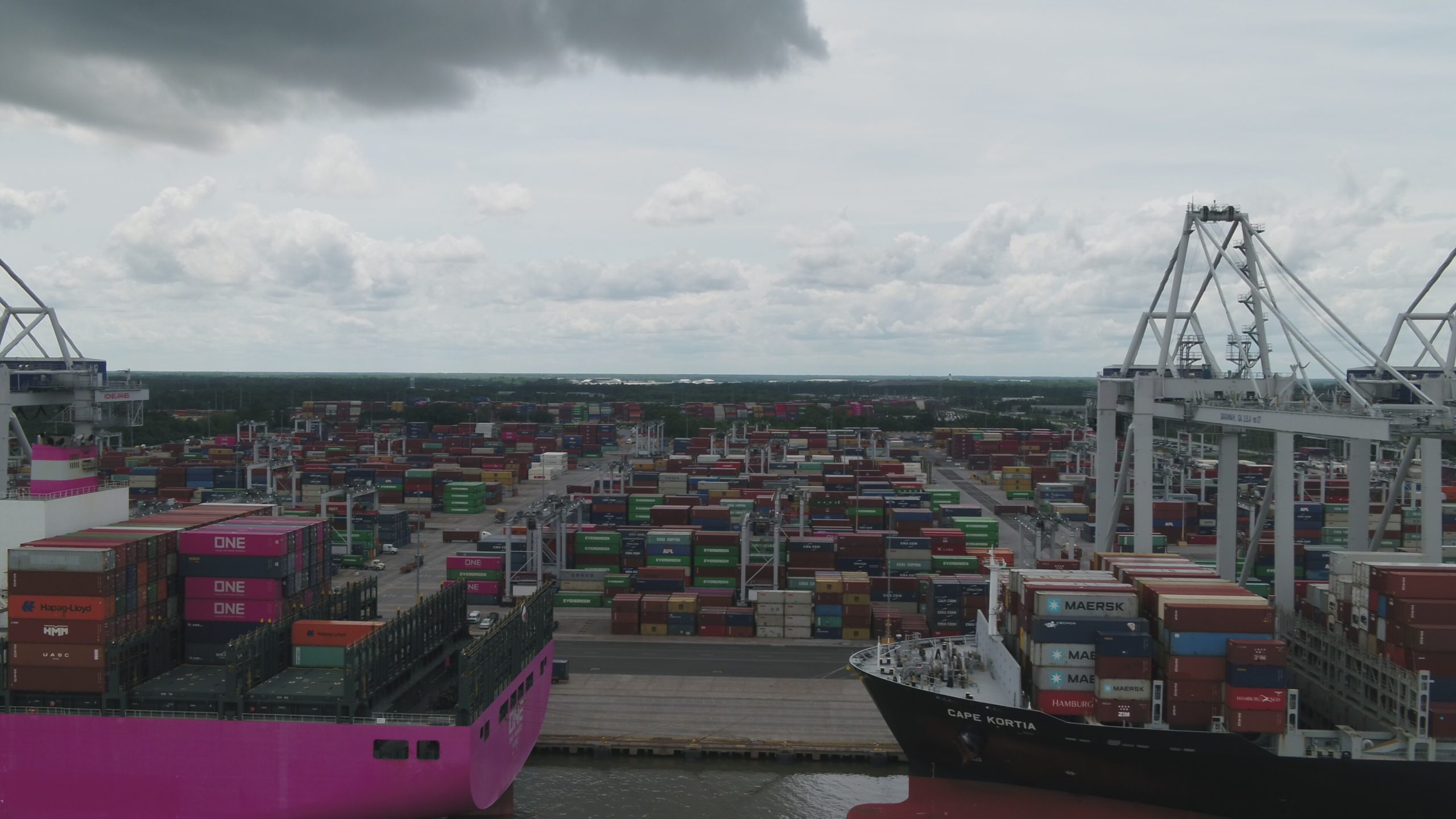Since the COVID-19 crisis, the retail share of e-commerce has continued to increase.
Just-in-time inventory systems shifting to just-in-case
E-commerce was already growing rapidly, but COVID-19 – and new thinking on inventory – have accelerated that trend, along with the need for warehouse space to support digital sales.
The concept of just-in-time inventory is now just-in-case. Dr. Walter Kemmsies, a managing director at industrial real estate consultancy Jones, Lang, and LaSalle (JLL), notes “the days of thin inventory levels are over.” According to a recent JLL study, e-commerce’s share of retail was 12.8% in the fourth quarter of 2019. It was projected to reach 30% by 2030. It is possible that in March-April it has already reached that level, according to the study.
E-commerce acceleration is driving new demand for warehouse space, especially near major U.S. ports. Nationally, e-commerce leasing nearly doubled in the first quarter of 2020. Average asking rent increased 8.8 percent year-over-year to $6.30 per square foot for the quarter. The construction pipeline remains strong, with nearly 65 million square feet delivered and more than 300 million square feet currently under construction across the U.S.
But the key question is: will that be enough? Reporting for industrial real estate company Prologis on COVID-19’s impact, Managing Partner Will O’Donnell said accelerated e-commerce adoption and higher inventory levels could generate demand for an additional 150 million to 200 million square feet per year for two to three years. The report states each percentage point of market share that shifts away from bricks and mortar to online translates to 46 million square feet of net demand in the U.S. With the penetration rate already rising by around 1.25 percent annually, March through April’s e-commerce growth suggests a far greater shift for 2020 as a whole.
New warehouses are being built across the nation to respond to e-commerce growth, but all the construction may take more than a year. In addition to growing retailer demand, parcel delivery and paper/packaging businesses will need more space. O’Donnell stated several industries are still in the early phases of e-commerce adoption, including food & beverage and construction/home improvement. In recent weeks, grocers have announced three or four times the online sales achieved in the same period last year. While much of this shift may be temporary, some may be permanent as new adopters become familiar with e-commerce.
Chris Tomasulo, an Atlanta-based managing director at JLL, said there will be more clarity on what these trends mean for Savannah after June. “What makes this hard to gauge is Savannah’s extremely low vacancy rate at roughly 2.6 percent. On top of that, if a tenant required space today, there are roughly three properties currently available over 250,000 square feet to lease. E-commerce warehouses need at least that size, as well as a building clear height of 36-40 feet that allows them to densify operations, operating on up to three levels of mezzanine.”
“Savannah has been quiet lately for e-commerce demand and we expect this trend to change,” said Tomasulo, adding developers continue to build on a speculative basis because they believe in the Savannah market. “Proximity to the Port of Savannah and its position as a the third largest gateway in the U.S. makes taking a land position in these times desirable.”
Tomasulo said Savannah landowners have been willing to work with developers amid the current uncertainty. Developers who are confident that the Port of Savannah will continue its pre-Covid-19 trajectory have shown a desire to take advantage of the pent-up demand for space that will come with economic recovery.
Atlanta is already seeing off-the-charts demand for warehouse space for e-commerce. Industry watchers estimate Amazon and Walmart alone will have signed roughly 9 million square feet of leases by the end of Q2 2020.
Population centers traditionally have been the first choice for e-commerce warehouses. But high-population regions are also increasingly in demand, and that is where Savannah shines. The city is in the heart of the Southeast with quick reach to Atlanta, Memphis, Jacksonville, Orlando and other markets. “As North America’s single largest container terminal, Savannah’s Garden City Terminal can easily handle the growth that will come in the shift from just-in-time to just-in-case,” notes GPA’s Lynch.
